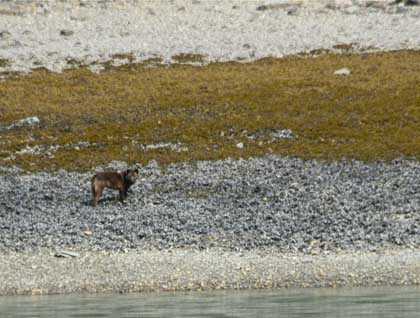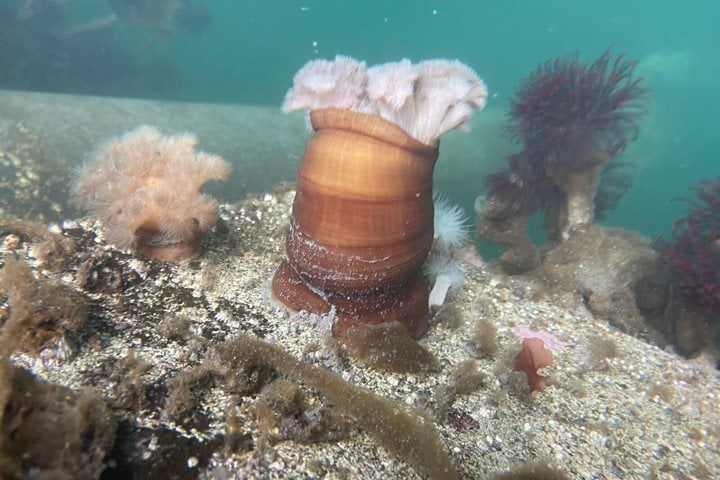We awoke this morning in the vast wilderness of Glacier Bay. The weather was perfect; clear blue skies, jagged mountain peaks visible all around, and water surface like glass. Two extra guests had quietly come aboard for the day: a National Park ranger named Amanda and a Tlingit cultural interpreter named William.
Right after breakfast we slowed to look for wildlife at South Marble Island. A pair of humpback whales (mother and calf) were also there, so we delayed approaching the island until they swam off. Steller sea lions growled and roared at each other on low rocks of the islands. We saw tufted puffins, and the more rare horned puffins, too. Their bright bill coverings will fall off after breeding season. Groups of black and white birds called common murres flew over the water in beautiful synchrony. As the ship departed South Marble Island, we looked behind and saw the humpback calf breach twice.
At the entrance to Tidal Inlet, sharp eyes on board saw a dark mammal on rocks near shore. It disappeared, and when we saw it again, we saw that it was a brown wolf! We were very excited by this sighting, since wolves are rare to see. Further into the Tidal Inlet, there was an enormous brown bear, but we didn’t watch that bear for long, because there was another brown wolf close to shore. We watched this second wolf turn over big clumps of mussels, and dig underneath them, looking for things to eat.
At the beautiful rock formation called Gloomy Knob, we watched several mountain goat nannies with kids that we were just a few days old, and a few were nursing. It was impressive to watch the small goats follow their mothers up the steep rock slopes.
The ship continued north up bay, and as the day warmed we shed layers of outerwear. Close to Margerie and Grand Pacific glaciers, the water appeared light, milky green in color due to high amounts of glacial silt in it. Small chunks of floating ice tapped against the ship’s hull. The face of Margerie Glacier is nearly 250 feet tall, and spires of ice called seracs balanced precariously at the water’s edge. We heard thunderous noises as the ice shifted, and chunks of glacial ice calved into the water. Beyond it, jagged mountains of the Fairweather Range were visible. The scene was breathtaking.
As we traveled down bay, our cultural interpreter William spoke of his Tlingit culture’s traditions and connection to Glacier Bay. Amanda gave a personal account of the importance of wilderness to her. This enormous and very wild region we visited today is being shaped by ice, and can transform us, too.







